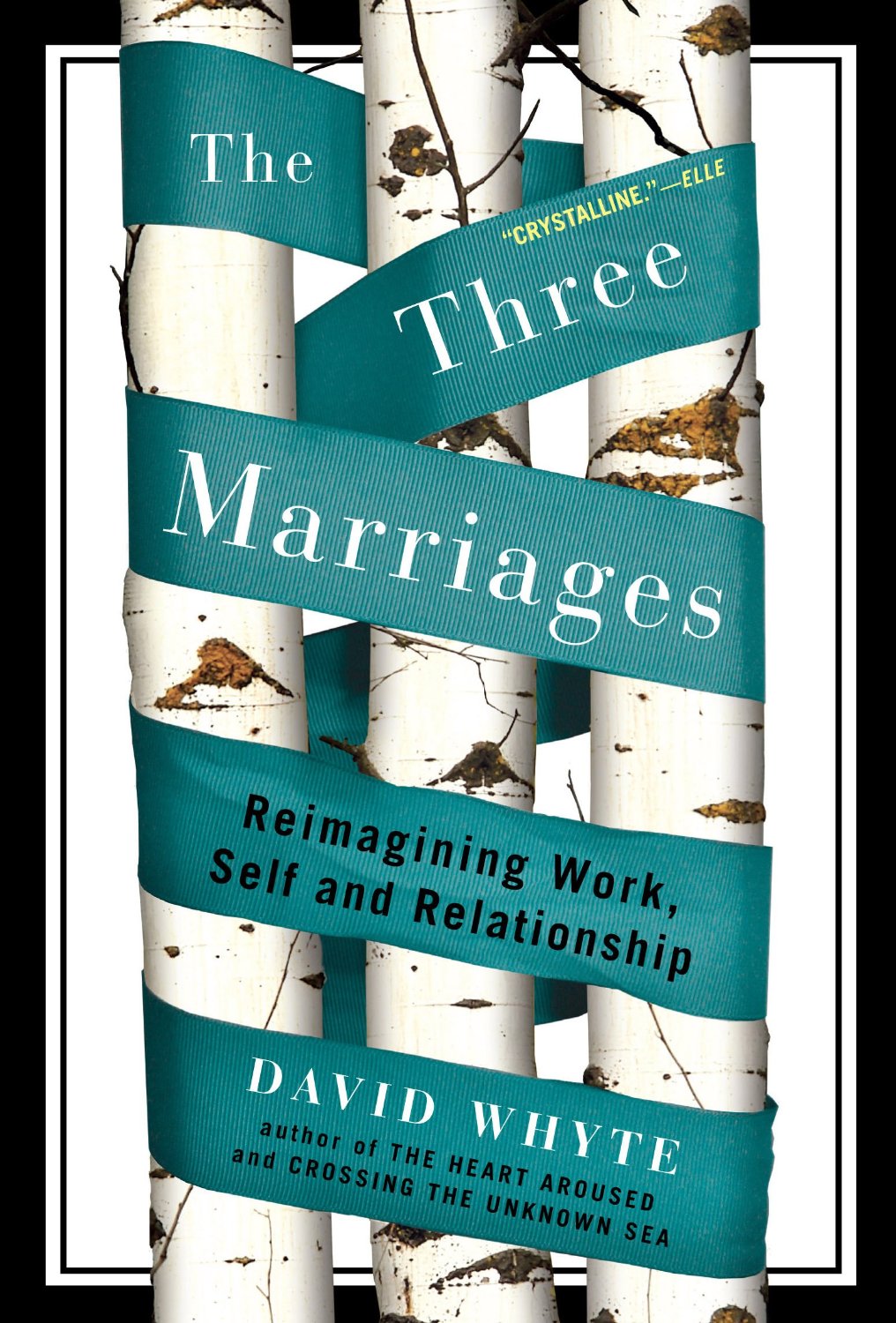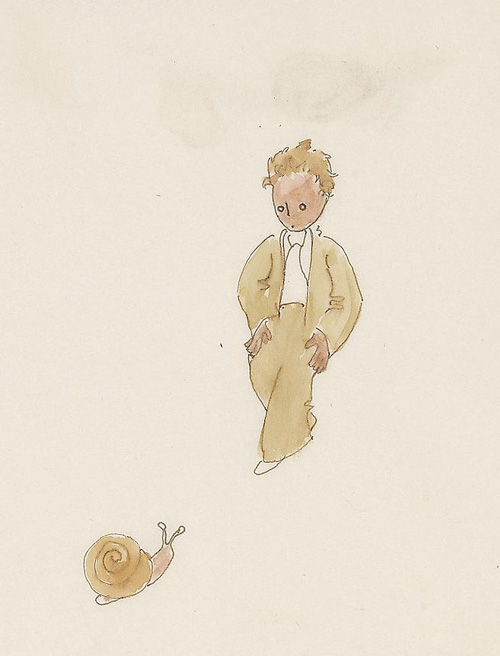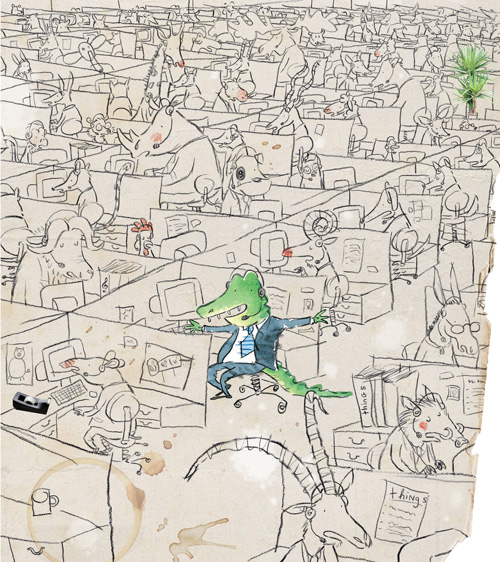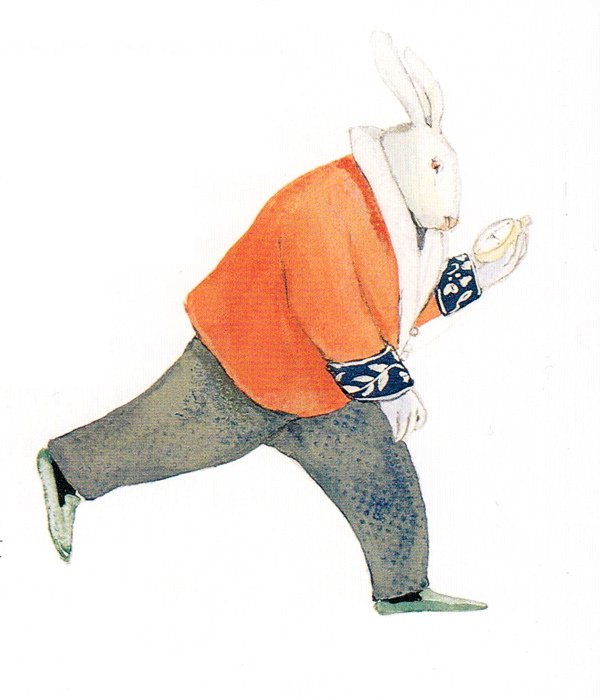Excerpt: "This willingness to look at the transitory nature of existence [is] not pessimism but absolute realism: life is to be taken at the tilt, you do not have forever, and therefore why wait? Why wait … to become a faithful and intimate companion to that initially formidable stranger you called your self?"
David Whyte on How to Break the Tyranny of Work/Life Balance
by Maria Popova
“We are each a river with a particular abiding character, but we show radically different aspects of our self according to the territory through which we travel.”
 The equilibrium between productivity and presence is one of the hardest things to master in life, and one of the most important. We, both as a culture and as individuals, often conflate it with the deceptively similar-sounding yet profoundly different notion of “work/life balance” — a concept rather disheartening upon closer inspection. It implies, after all, that we must counter the downside — that which we must endure in order to make a living — with the upside — that which we long to do in order to feel alive. It implies allocating half of our waking hours to something we begrudge while anxiously awaiting the other half to arrive so we can live already. What a woefully shortchanging way to exist — lest we forget, so speaks Annie Dillard: “How we spend our days is, of course, how we spend our lives.”
The equilibrium between productivity and presence is one of the hardest things to master in life, and one of the most important. We, both as a culture and as individuals, often conflate it with the deceptively similar-sounding yet profoundly different notion of “work/life balance” — a concept rather disheartening upon closer inspection. It implies, after all, that we must counter the downside — that which we must endure in order to make a living — with the upside — that which we long to do in order to feel alive. It implies allocating half of our waking hours to something we begrudge while anxiously awaiting the other half to arrive so we can live already. What a woefully shortchanging way to exist — lest we forget, so speaks Annie Dillard: “How we spend our days is, of course, how we spend our lives.”
In The Three Marriages: Reimagining Work, Self and Relationship (public library) — a book reminiscent of Parker Palmer’s beautiful Thoreau-esque writings onthe art of inner wholeness yet wholly revelatory in its own right — English poet and philosopher David Whyte aptly calls “work/life balance” a “phrase that often becomes a lash with which we punish ourselves” and offers an emboldening way out of this cultural trap. In an immensely insightful inquiry into these three primary commitments we all make in life, consciously or not, and the dynamics common to them all — the sequence of recognition, pursuit, disappointment, and recommitment — he explores “all those strange and inexplicable inner ways we belong to ourselves.”

One of Antoine de Saint-Exupéry's original watercolors for 'The Little Prince.' Click image for more.
In a sentiment reminiscent of Emerson — who observed in his reflections onhow we grow: “People wish to be settled; only as far as they are unsettled is there any hope for them.” — Whyte turns a skeptical eye toward the concept of “balance” between work and life:
Poets have never used the word balance, for good reason. First of all, it is too obvious and therefore untrustworthy; it is also a deadly boring concept and seems to speak as much to being stuck and immovable, as much as to harmony. There is also the sense of unbalancing that must take place in order to push a person into a new and larger set of circumstances.[…]The current understanding of work-life balance is too simplistic. People find it hard to balance work with family, family with self, because it might not be a question of balance. Some other dynamic is in play, something to do with a very human attempt at happiness that does not quantify different parts of life and then set them against one another. We are collectively exhausted because of our inability to hold competing parts of ourselves together in a more integrated way.
This longing for integration has always been part of the human experience, but today we ache for it more than ever as we face a culture that, in the wise and wonderful Courtney Martin’s words, asks us to “show up as only slices of ourselves in different places.” Whyte captures this beautifully:
These hidden human dynamics of integration are more of a conversation, more of a synthesis and more of an almost religious and sometimes almost delirious quest for meaning than a simple attempt at daily ease and contentment.
In a passage that calls to mind Wendell Berry’s glorious meditation on solitude, Whyte details the trifecta of his inquiry:
Human beings are creatures of belonging, though they may come to that sense of belonging only through long periods of exile and loneliness. Interestingly, we belong to life as much through our sense that it is all impossible, as we do through the sense that we will accomplish everything we have set out to do. This sense of belonging and not belonging is lived out by most people through three principal dynamics: first, through relationship to other people and other living things (particularly and very personally, to one other living, breathing person in relationship or marriage); second, through work; and third, through an understanding of what it means to be themselves, discrete individuals alive and seemingly separate from everyone and everything else.These are the three marriages, of Work, Self and Other.[…]We can call these three separate commitments marriages because at their core they are usually lifelong commitments and … they involve vows made either consciously or unconsciously… To neglect any one of the three marriages is to impoverish them all, because they are not actually separate commitments but different expressions of the way each individual belongs to the world.
Whyte draws the prefatory conclusion:
We should stop thinking in terms of work-life balance. Work-life balance is a concept that has us simply lashing ourselves on the back and working too hard in each of the three commitments. In the ensuing exhaustion we ultimately give up on one or more of them to gain an easier life.
I have always found the notion of compromising — particularly when it comes to this unfair tradeoff of work and life — to be a double-edged sword of meaning: on the one hand, a compromise implies reaching a happy medium between two conflicting needs; on the other, to compromise requires the trimming off of excess in one area in order to alleviate a deficit in the other, which invariably means compromising — in the sense of undermining — the area deemed excessive. And yet, as Anaïs Nin memorably remarked her passionate case for the importance of excess in creative work, such compromising hardly benefits us in the end.
Whyte gets at this elegantly, noting that each of the three pursuits he explores “is, at its heart, nonnegotiable,” and urges us to start thinking of each not as something to be balanced against the other two but as something “conversing with, questioning or emboldening the other two.” Only then can we begin to shift away from “trading and bartering parts of ourselves as if they were salable commodities.” Because work and life are not separate things, he argues, they can’t be “balanced” against one another; instead, they are best treated as a “movable conversational frontier.”
Beneath these seemingly contradictory demands of work and life, Whyte observes, are two deeper needs pulling us in opposite directions with equal force — our often exhausting desire to belong with our fellow human beings and our longing for solitude, for being “left completely and utterly alone, trawling the deep riches of an inner peace and quiet, where the self can actually seem lithe, movable, limitless and inviolate.” And yet Whyte sees hope for reconciliation:
We can still make a real life even when crowded by other identities, or even when unbalanced and intoxicated with desire, or even when we are disappointed in work or love, and perhaps the way, at the center of all this deep love of belonging and this deep exhaustion of belonging, we may have waiting for us, at the end of the tunnel, a marriage of marriages, a life worth living, and one we can call, despite all the difficulties and imperfections, our very own.
Whyte draws a parallel between the first two marriages:
Work, like marriage, is a place you can lose yourself more easily perhaps than finding yourself. It is a place full of powerful undercurrents, a place to find our selves, but also, a place to drown, losing all sense of our own voice, our own contribution and conversation.[…]Good work like a good marriage needs a dedication to something larger than our own detailed, everyday needs; good work asks for promises to something intuited or imagined that is larger than our present understanding of it. We may not have an arranged ceremony at the altar to ritualize our dedication to work, but many of us can remember a specific moment when we realized we were made for a certain work, a certain career or a certain future: a moment when we held our hand in a fist and made unspoken vows to what we had just glimpsed.[…]Work is a constant conversation. It is the back-and-forth between what I think is me and what I think is not me; it is the edge between what the world needs of me and what I need of the world. Like the person to whom I am committed in a relationship, it is constantly changing and surprising me by its demands and needs but also by where it leads me, how much it teaches me, and especially, by how much tact, patience and maturity it demands of me.
In a sentiment that calls to mind Parker Palmer’s wisdom on letting your life speak and Van Gogh’s floundering to find his purpose, Whyte writes:
Work is a constant invisible question, sometimes nagging, sometimes cajoling, sometimes emboldening me; at its best beckoning me to follow a particular star to which I belong.
One can’t help but think of Gabriel García Márquez’s unlikely path to becoming a writer as Whyte adds:
If children move into their late teens with no inkling of their future vocation, not even a glimpse of the star, it is time for the adult world around them to become rightly and increasingly worried. At this point a seemingly wrongheaded but determined direction is far better than none at all. It may be, in fact, that most of the great work done by individuals through history has often been accomplished through long years of dedicated wrongheadedness.
And yet the most challenging marriage of all is the invisible, private one behind the two public-facing commitments of work and relationship — “the internal and often secret marriage to that tricky movable frontier called ourselves.” While poets and psychologists agree that the self is a fluid phenomenon and there is no such thing as fixed personality, we still cling to the comforting falsehood that the self is a stable foundation. And yet in its very instability, Whyte suggests, lies its promise of satisfaction — the self “moves and changes and surprises us as much as anything in the outer world to which it wants to commit,” and that outer world invariably shapes our inner experience. He captures this with a philosopher-poet’s lyrical precision:
We are each a river with a particular abiding character, but we show radically different aspects of our self according to the territory through which we travel.[…]Neglecting this internal marriage, we can easily make ourselves a hostage to the externals of work and the demands of relationship. We find ourselves unable to move in these outer marriages because we have no inner foundation from which to step out with a firm persuasion. It is as if, absent a loving relationship with this inner representation of our self, we fling ourselves in all directions in our outer lives, looking for love in all the wrong places.
Echoing Rilke’s exquisite meditation on how we hide from ourselves and Seneca’s on the shortness of life, Whyte adds:
Not only can we become afraid of these internal questions, but also we can become terrified of the spaces or silences in which these questions might arise. The act of stopping can be the act of facing something we have kept hidden from ourselves for a very long time.[…]The marriage with the self is difficult because it is connected to the great questions of life that refuse to go away and which are also connected to our own mortality. In the silences that accompany a strong internal relationship with the self we see not only the truth of our present circumstances and a way forward but we also realize how short our stay is on this earth. Life waits for us in this internal marriage, but death waits for us also.
As if driven by Mary Oliver’s existential prod “urgent as a knife,” Whyte reminds us that it pays to imagine immensities and writes:
This willingness to look at the transitory nature of existence [is] not pessimism but absolute realism: life is to be taken at the tilt, you do not have forever, and therefore why wait? Why wait … to become a faithful and intimate companion to that initially formidable stranger you called your self?
He considers what marriage — any marriage, in all three domains — asks of us, and what it stands to give:
It is almost like a mutual invitation to which both partners must respond wholeheartedly. It includes as much of the future in its gravitational pull as it does any present particularities. It is something that lives over the horizon as much as it exists in the here and now. It is full of keen daily pleasures and shattering disappointments. From all of these early, optimistic appearances and depressing disappearances we realize we have had a first glimpse of secret imagined possibilities, until now unspoken.
In the remainder of The Three Marriages — a tremendously rewarding read in its totality — Whyte delves into the details of each domain, fortifying his poetic and practical insights with lived examples from the lives of such creative luminaries as Jane Austen, Charles Dickens, Robert Louis Stevenson. Complement it with Ursula Nordstrom’s letter to young Maurice Sendak on the cohesion of creative purpose, Parker Palmer on how to live with inner wholeness, and the story of how Van Gogh found his purpose.



No comments:
Post a Comment